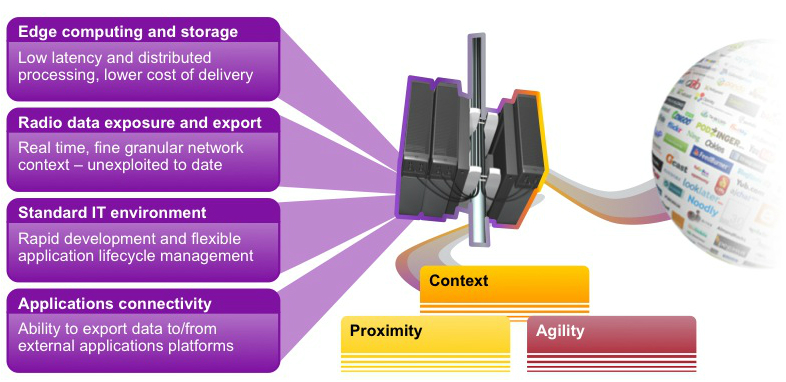Innovation at the Edge
Dumb pipes aren’t trendy, of course, but core networks are clearly being designed like the Incredible Hulk: extremely powerful, resilient and fast ... but not terribly smart. Network intelligence is moving to the edge, closer to the end user, resulting in lower latency, improved quality of experience (QoE) and reduced backhaul congestion.
“There is an ongoing shift in how applications are being consumed at the network edge and how they are being delivered, putting even more demands on the enterprise network than ever before,” wrote Rohit Mehra, IDC’s vice president of network infrastructure, in a recent press release. “IDC believes today’s networks need to evolve to meet the growing demands for application visibility and performance, which will ultimately result in improved performance for branch services that require applications to be pervasive network-wide.”
Solutions sitting on the edge
There are several solutions that can assist CSPs in the development of next-generation networks (NGNs) and the construction of smarter, more agile, more economical platforms that better serve their customers’ needs. Vendors, for one, have jumped at the opportunity to provide solutions that can empower NGNs to realize greater intelligence and application performance at the network edge. One of their latest innovations involves building base stations and small cells (which are really just miniaturized base stations) with application-processing and compute power in order to make them smarter.
Nokia Siemens Networks (NSN) calls its solution Liquid Applications, which relies on an application cloud server within the base station itself, allowing a CSP to deliver data services directly from the network edge with little to no strain on the backhaul network. At the same time, network, location and subscriber data are gathered in real time and can be leveraged to create richer services, as you can see in figure 1 below.

Dirk Lindemeier, head of NSN’s Liquid Net division, which oversees Liquid Applications, believes the company’s solution will redefine mobile broadband. “It creates a completely new base for innovation in an increasingly commoditized connectivity market and enables the creation of new value from mobile networks.”
SK Telecom is currently trialing Liquid Applications, and in February NSN and IBM showcased their edge-based mobile computing platform, the first of its kind, at Mobile World Congress.
Ubiquisys has taken a somewhat similar approach with Smart Cells, which add intelligence and application processing power to small cells. The chief innovation of the company’s EdgeCloud platform, Smart Cells are further enhancedwith acceleration software from Saguna Networks. “Working with the RAN [radio access network] optimization experts [at] Saguna, we’ve shown that it’s possible to simultaneously reduce network traffic and improve quality of experience,” said Pete Keevill, VP of engineering and cofounder of Ubiquisys, in a recent announcement.
Content delivery networks (CDNs) present another option for pushing compute and storage away from the core and out to the edge. Essentially a form of caching and redirection technology that pulls the cloud out of the data center and closer to the end user, CDNs offer many advantages, not the least of which is an answer to the over-the-top (OTT) service-delivery dilemma. Companies like Verivue, acquired by Akamai late last year, and Velocix, part of Alcatel-Lucent, specialize in creating CDNs for service providers; Ericsson announced its own unified CDN at this year’s Mobile World Congress.



















